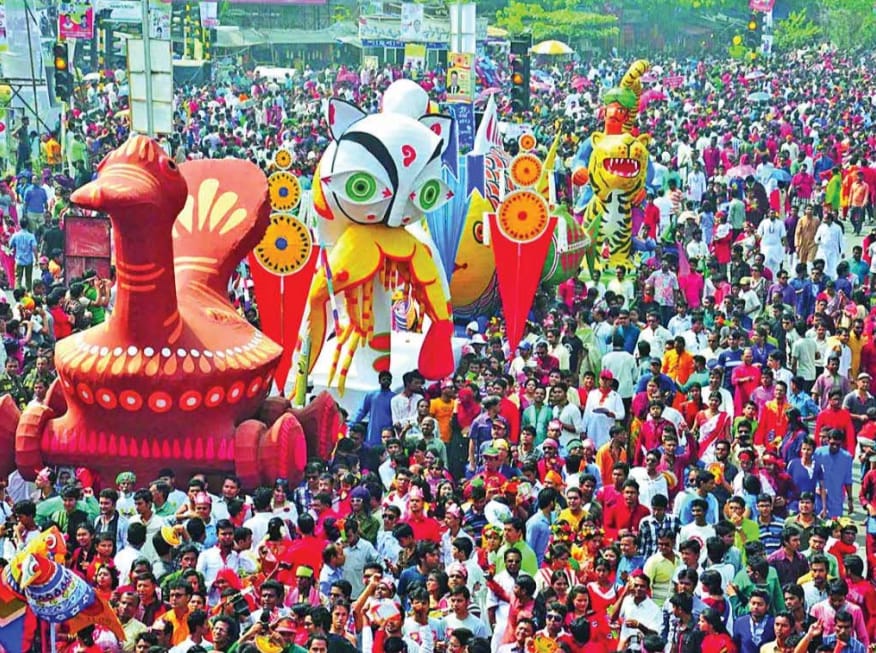Pohela Boishakh, the radiant harbinger of Bengali New Year, dances into the hearts of the people with an effervescent spirit, painting the cultural canvas of the land with vibrant hues of tradition and festivity. Known affectionately as ‘Noboborsho’ or ‘Borsho Boron Utshab’, this joyous occasion heralds the advent of the first day of Boishakh, the inaugural month in the Bengali Solar Calendar. On the auspicious date of April 14th, a national holiday ensconces Bangladesh in jubilation, as its people come together in exuberant celebration. Across West Bengal, Assam, Tripura, and beyond, the Bengali diaspora joins in the revelry, bridging religious and regional divides with shared jubilation.
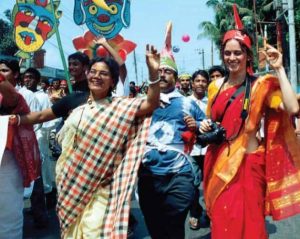
Yet, amidst the revelry, whispers of antiquity weave through the fabric of the celebration, their origins shrouded in the mists of time. Legends whisper of a bygone era under the reign of the illustrious Mughal Emperor, Akbar. In those days of yore, when agriculture reigned supreme as the lifeblood of the nation, the fiscal landscape was fraught with challenges. Taxes, levied in accordance with the lunar-based Hijri calendar, clashed with the solar rhythms of agrarian life, threatening chaos for the peasantry. Sensing the discord, Emperor Akbar, in a stroke of sagacity, ushered forth a new era of order. With a decree as bold as the stroke of his pen, he birthed a novel calendar, aligning taxation with the bountiful cycles of the sun-kissed fields. Thus, in the annals of history, Emperor Akbar’s visionary act not only birthed a new calendar but also inaugurated a tradition that would endure through the ages.
Yet, the annals of time hold myriad tales, each a thread in the rich tapestry of Pohela Boishakh’s genesis. Whispers of lore beckon from shadowed corners, inviting the curious to delve deeper into the enigmatic origins of this cherished celebration. For every historian, a tale; for every storyteller, a narrative spun from the loom of tradition. And thus, the legacy of Pohela Boishakh endures, a testament to the resilience of culture and the timeless spirit of renewal.

In the ethereal dawn of Pohela Boishakh, Bangladesh awakens to a symphony of cultural fervor beneath the sprawling canopy of the Ramna Batamul, where the venerable banyan tree stands as a silent witness to the nation’s collective spirit. Here, amidst the verdant embrace of Ramna Park, thousands converge in eager anticipation for the annual extravaganza curated by ‘Chhayanaut’, a bastion of Bengali heritage.
As the first rays of sunlight cast their golden glow upon the gathered throngs, the air resonates with the melodious strains of Rabindranath Tagore’s timeless anthem, “Esho hei Boishakh, esho, esho,” beckoning souls to join in the chorus of celebration. It is a moment of profound significance, as the echoes of Tagore’s words reverberate through the hearts of all who bear witness.
Following this stirring prelude, the stage becomes a tableau of cultural splendor, as performers from across the nation showcase the rich tapestry of Bengali arts. From traditional music and dance to poetry recitations and theatrical performances, each act serves as a testament to the enduring legacy of Bengali culture.
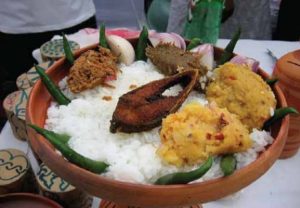
But perhaps the most iconic aspect of the festivities is the Mangal Shobhajatra, a vibrant procession that winds its way through the streets, led by the visionary students of the Faculty of Fine Arts, University of Dhaka. With each step, they breathe life into the ancient tradition, their colorful costumes and elaborate floats capturing the imagination of all who behold them.
Indeed, Pohela Boishakh transcends the boundaries of caste, creed, and community, drawing participants from all walks of life to partake in its luminous embrace. It is a celebration of unity in diversity, a testament to the power of culture to unite and uplift the human spirit.
In recognition of its unique and artistic significance, Pohela Boishakh was bestowed with the prestigious title of “Cultural Heritage of Humanity” by UNESCO in 2016, cementing its place as a beacon of cultural pride for the nation and beyond. And as the echoes of celebration fade into the night, the spirit of Pohela Boishakh lingers on, a timeless reminder of the resilience and vibrancy of Bengali culture.
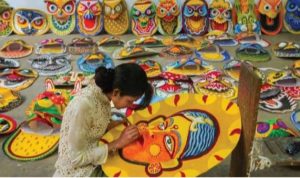
To partake in the jubilant festivities of Pohela Boishakh is to immerse oneself in a kaleidoscope of tradition and joy, where every corner of the land resonates with the spirit of renewal and camaraderie. As the sun rises on this auspicious day, the vibrant procession of Mangal Shobhajatra beckons, a riot of color and culture that sets the stage for a day of celebration.
Amidst the jovial throngs, greetings of “Shuvo Noboborsho” ripple through the air, uniting hearts in the promise of a new beginning. Homes come alive with the ancient art of Alpana, intricate designs adorning every surface as a tribute to tradition and auspiciousness. As families gather in the warmth of the shared company, the air is filled with the aroma of festive delicacies, each dish a testament to the rich culinary heritage of Bengal.
But beyond the rituals of home and hearth, Pohela Boishakh heralds a new chapter in the business world as well. With the dawn of the Bengali fiscal year, business owners ceremoniously open new ledgers, symbolizing a fresh start and welcoming clients with sweet offerings, paving the way for prosperous transactions in the year ahead.
Yet, the heartbeat of this centuries-old celebration echoes loudest in the bustling fairs that dot the landscape, known as Boishakhi Melas. Here, amidst the myriad stalls laden with traditional wares and delicacies, the pulse of the nation beats in harmony with the rhythm of tradition. From handicrafts to agricultural goods, from pottery to wooden furniture, the Mela is a treasure trove of cultural riches, inviting visitors to immerse themselves in the tapestry of Bengali heritage.
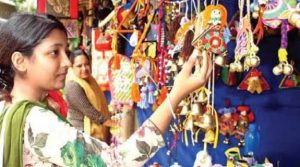
But the festivities do not end there. Across the country, a myriad of traditional events and rural sports unfold, each a testament to the enduring spirit of community and joy. From boat races to kite flying, from puppet shows to cockfights, the celebrations embrace every facet of Bengali life, weaving a tapestry of tradition that binds the past with the present.
In the digital age, the spirit of Pohela Boishakh finds new expression through social media, television specials, and cultural events, ensuring that its legacy endures in the hearts and minds of generations to come. And as the day draws to a close, the echoes of celebration linger, a testament to the enduring spirit of Pohela Boishakh and the timeless beauty of Bengali culture.
In essence, this exploration endeavors to reveal the essence of Pohela Boishakh and its profound connection to our rural Bengali ethos and customs. Despite the shifting tides of time, Pohela Boishakh remains a steadfast beacon of our cultural legacy, a testament to the enduring spirit of our heritage. Indeed, it stands as a testament to the resilience of tradition and the unyielding bonds of community. As we embrace its festivities with open hearts, Pohela Boishakh not only ignites our souls with newfound joy and fervor but also unites us all under its timeless embrace, transcending barriers of caste, creed, and community.
Written by-
Syed Atique
Media Analyst

